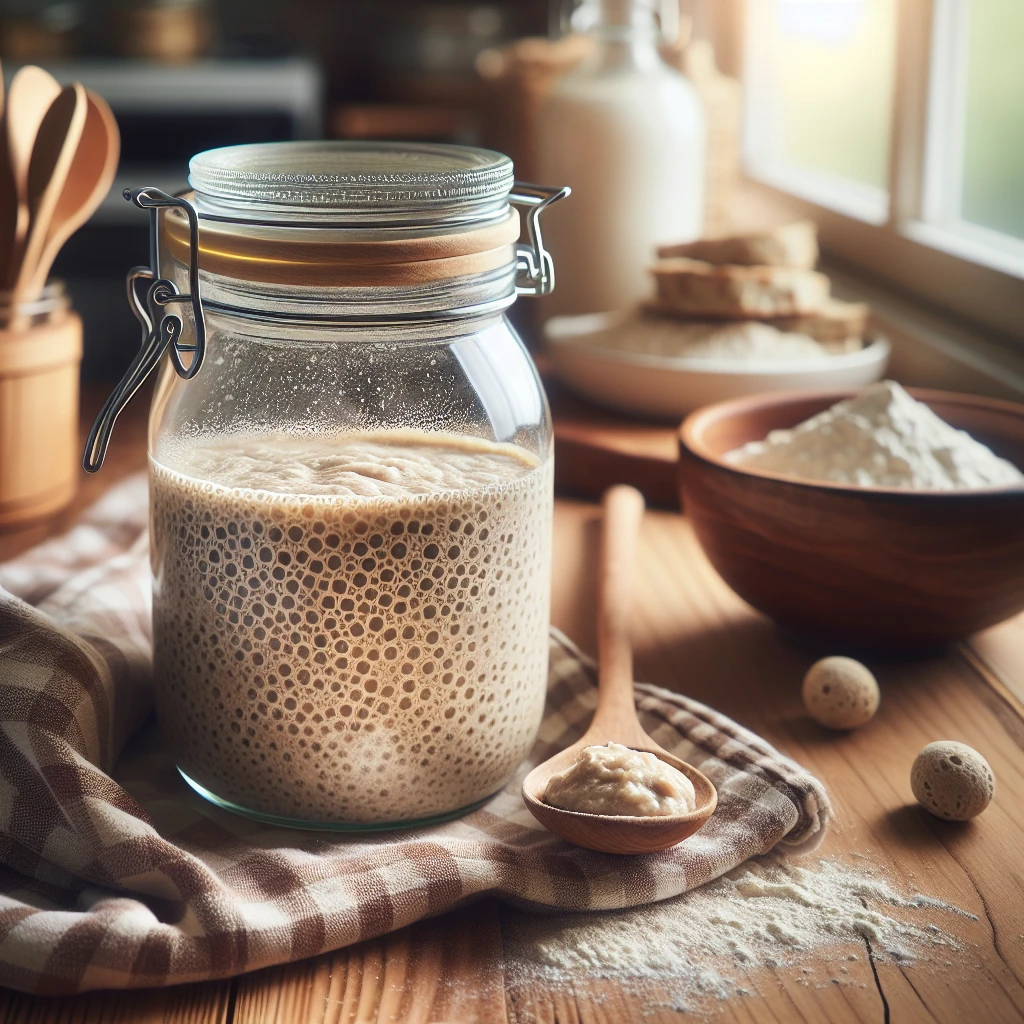
Creating your own Traditional Sourdough Starter is like inviting a timeless culinary tradition into your kitchen. It’s not just about the end product but the joy of cultivating something from scratch that will enhance your baking adventures.
The base of this starter is all-purpose flour. It provides the necessary starches that the yeast feeds on to grow. Warm water helps to activate the yeast, creating a hospitable environment for fermentation. A touch of sugar gives the yeast an initial boost, helping it to become active more quickly. The active dry yeast is the magic ingredient that kickstarts the fermentation process, leading to that tangy, characteristic sourdough flavor.
Once your starter is ready, use it to bake a classic sourdough loaf that pairs wonderfully with a hearty soup or stew. Slice it for sandwiches, toast it for breakfast with a slather of butter and jam, or use it as a base for homemade bruschetta.
Start by grabbing a large glass or plastic bowl (avoid metal as it can interfere with fermentation). Measure out 2 cups of all-purpose flour and add it to the bowl. Next, pour in 2 cups of warm water. You’re aiming for water that’s warm, not hot, which should feel comfortably warm to the touch.
Sprinkle in 1 tablespoon of sugar and 1 tablespoon of active dry yeast. Use a wooden spoon to stir the mixture until everything is well combined. You want the yeast and sugar to dissolve completely, which will ensure even fermentation.
Once mixed, cover the bowl with a clean, damp cloth. This keeps the environment humid and prevents the top of the starter from drying out. Let it sit at room temperature for 24 hours. During this time, the mixture will begin to bubble and ferment, which is a good sign that your starter is coming to life.
For the next five days, you’ll need to nurture your starter. Each day, stir the mixture once and then discard half of it. Don’t worry, this is normal and ensures your starter doesn’t overflow. After discarding, replenish it with 1 cup of flour and 1 cup of warm water, stirring well. By day five, your starter should be bubbly and emit a tangy aroma, indicating it’s ready for use.